

Common yew is a famous and wonderful hedge conifer.
Yew facts for you
Name – Taxus
Family – Taxaceae
Type – conifer
Height – up to 50 feet (16 meters)
Exposure – full sun to shade
Soil: ordinary, well drained – Foliage: evergreen
Its evergreen foliage is very appealing since it is very dense and sprigs are intricately shaped.
Common yew is a conifer usually planted as part of a hedge, and is often set up at the beginning of fall, but it can also be planted until March or April as long as it doesn’t freeze.
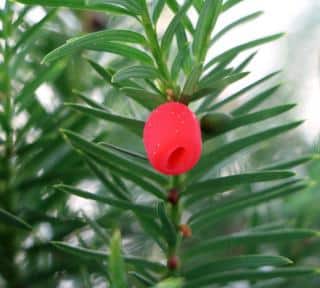
After having planted your yew, watering is needed on a regular basis for 2 years to facilitate root development and settling in.
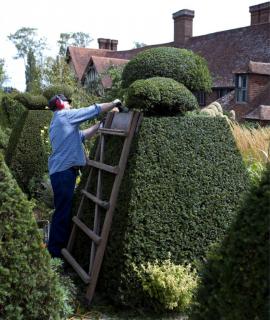
If not pruned, your common yew can grow over 65 feet (20 meters) tall for the tallest species.
For yew hedges, select the pruning height you are comfortable with as well as the thickness.
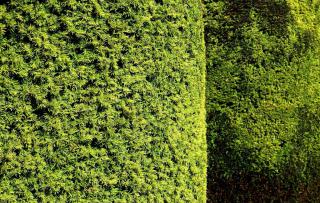
Yew is one of the few trees that supports hat-racking. This practice is more harmful than proper regular pruning, but for some species it can help shrink a hedge that has grown too large.
Yew isn’t a very demanding tree in terms of watering, but does deserve some attention, especially at the beginning.
Yew is a tree that resists mots diseases and fungus quite well, and its lifespan can exceed several hundreds of years.
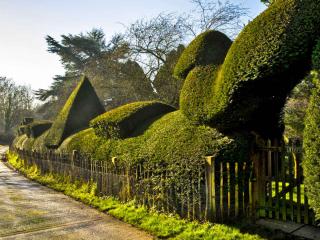
Ideal for persons who are passionate about topiary, it lends itself wonderfully to shaping. It’s perfect for cloud pruning.
Both its longevity and hardiness make it an interesting alternative to boxwood which is more vulnerable to disease.
It’s also reputed to be an excellent wind-breaker ready to resist gales of any power – and block out inquisitive neighbors, too.
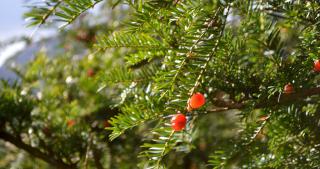 Poisonous yew berries
Poisonous yew berriesTake note, though, that yew is a poisonous plant.
Yew berries are absolutely not edible and all parts of the tree are toxic to some degree.
Prudent gardeners even wear gloves when pruning this tree.
When part of a hedge, think well about how high you want it to grow so that you can determine the planting distance of your yew accordingly! Keep a spacing of about 32 inches (80 cm) to 3 feet (1 meter) for the usual 6-foot (1.80 m) hedge.
Read also
There is a yew tree in the parish church yard at Waltham-St.-Lawrence UK planted in February 1655 by the Rev’d Wilkinson. Planted before Australian was settled/invaded. There are reports of yew trees being up to 5000 years old. I wonder! Would it need to be felled to count the rings?
Hi Brian, it’s true and it looks gigantic! Counting rings isn’t actually the way to go for yew because of two reasons: first, they’re sometimes attacked by a “core fungus” that rots the inside portion of the tree away without hurting the live part. Second, older trees grow very irregularly around, forming the thick muscle-like ridges up and down the tree; it’s harder to see the rings and follow the count to the center.
The best way to estimate a yew tree’s growth isn’t to cut it. It’s to measure its girth and then use a formula to compute the age. At about 3 feet up (1 meter), mesure the girth. 1 foot is 30 years of age. In metric unites, this means each centimeter in circumference is equivalent to 1 year. So if the tree measures 6 feet around (2 meters), it’s around 180-200 years old.
Hello my name is Wade. Is it ok to prune a yew hedge hard just after planting to bring
it to desired height?
Hello Wade. Yes, it is. Yew is one of the few plants that can cope with hat-racking (a hard pruning, not recommended for most species).
Pruning it just upon planting may actually help it cope with transplant shock: since it lost most of its roots, reducing leafage will even things out.